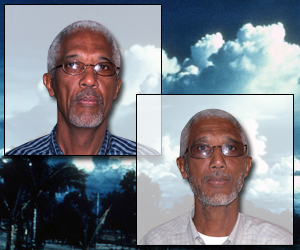Introduction
This is the print version of the Conceptual Models of Tropical Waves webcast, presented by Mr. Horace Burton and Mr. Selvin Burton under the auspices of the MeteoForum Project.
Mr. Horace Burton is Chief Meteorologist at the Caribbean Institute for Meteorology and Hydrology, and lectures Meteorology at the University of the West Indies. Mr. Burton has over 25 years of experience in meteorology, including forecasting in the tropics.

Mr. Selvin Burton is Chief of Data and Information Services at the Caribbean Institute for Meteorology and Hydrology, and senior lecturer in Meteorology at the University of the West Indies. He has been involved as a meteorologist for over 25 years in both operational forecasting and research, as well as teaching.
Module description and objectives
This module examines some Conceptual Models of Tropical Waves, particularly those that affect the eastern Caribbean. Tropical waves are prolific rainfall producers that sometimes form tropical cyclones. Conceptual Models of Tropical Waves are used to help learners understand the dynamical characteristics and evolution of tropical waves. Users will learn about the vertical and horizontal structure of tropical waves and the typical weather changes that accompany the passage of a tropical wave. Four different methods of tracking tropical waves are also provided.
After completing this Webcast, users should be able to:
- Define tropical waves and state why they are important
- Describe the typical wavelength, frequency, propagation speed, and direction of tropical waves
- Describe the horizontal structure and vertical structure of tropical waves in terms of winds, moisture and temperature
- Describe the lifecycle of Reihl's Classical easterly wave in terms of wind velocity, relative humidity, clouds, and precipitation
- Identify tropical waves based on Frank's Inverted 'V' model, i.e., banded clouds in the shape of an inverted 'V'
- Describe the relationship between the upper and lower troposphere flow in Frank's conceptual model
- Describe the characteristics of African waves including their origin, wavelength, and relative intensity between inland and the coast
- Describe the typical distribution of divergence in African waves
- Describe the distribution of vorticity in African waves
- Describe the distribution of clouds and precipitation in African waves
- Understand that inter-annual variations in the frequency and strength of African waves are correlated with the occurrence of intense Atlantic storms
- Detect and track tropical waves using satellite imagery, satellite-derived surface winds, wind profiles, and model output